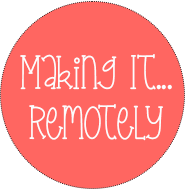This article is about how to set business goals and why it's important. We'll also show you examples of SMART goals. Setting business goals is crucial when you're focused on building and growing an online business.
Goal setting has been described as the process of deciding what you want to accomplish and creating a plan to achieve the desired results. Sounds simple, right? Not so fast…
While setting business goals may seem like the right thing to do, actually taking action to plan, getting them on paper and implementing can be a real struggle in the grand scheme of things.
In all the hustle and bustle of everyday life, the distractions, emergencies and other struggles, it can be easy to put goal planning at the bottom of the pile, unless you find ways to stay focused.
Reasons to Stay Focused on Your Goals
Here are some of the many benefits that come with regular attention to your goals.
- Clarity and Focus: Goals provide a clear direction and focus for your business. They help you define where you want to go and what you want to achieve, guiding the decision-making processes.
- Motivation and Inspiration: Well-defined goals serve as a source of motivation and inspiration. They give you and your team a sense of purpose, encouraging everyone to work towards a common objective.
- Measuring Progress: Goals provide a benchmark for measuring your progress. By regularly evaluating your achievements against your goals, you can identify what's working well and what needs adjustment.
- Resource Allocation: Setting goals helps in effective resource allocation. It allows you to prioritize tasks, allocate resources, and manage time efficiently to achieve the desired outcomes.
- Adaptation to Change: Goals act as a framework for adapting to changes in the business environment. They help you stay agile and adjust strategies as needed to respond to market shifts or unexpected challenges.
- Enhanced Decision Making: With clear goals in place, decision-making becomes more straightforward. You can assess options based on their alignment with your objectives, making it easier to choose the most suitable path for your business.
- Communication and Collaboration: Clearly defined goals facilitate communication within your team. When everyone understands the business objectives, collaboration becomes more effective, leading to a more cohesive and productive work environment.
- Long-Term Vision: Goals contribute to the development of a long-term vision for your business. They guide you in shaping a roadmap for future growth and sustainability.
Improve Your Work Life Balance
Ensure that you’re taking the right actions, in the right places at the right time to reach your personal and business goals.
What are SMART Goals and Why are They Important?
Setting SMART goals can simplify your business and give you a framework that will help you expand, make decisions and resolve issues. Setting goals can also give you feedback that helps your business constantly improve and move in the right direction.
I know that some business owners would rather have dental surgery than participate in setting goals, and they really hate tracking them… unless the news is good.
However, when all the benefits are considered, and they remember that planning is crucial to business success, learning how to set business goals is totally worth any real or perceived pain.
It’s hard to make sound business decisions without facts and figures. And that's the biggest reason it's important to invest time in learning how to set business goals.
Discovering How to Set Business Goals is Not That Hard
When you peel away the layers, setting SMART goals is really not as intimidating as it seems. It just requires taking a look at historical results and coming up with ways to improve.
Most business owners are good at coming up with ideas in their head, but not putting pen to paper and digging deeper for meaningful results.
Our goal is to help you get better at setting and reaching your business goals so that you can create a life you don't need a vacation from!
Don't Know Where to Start?
Convert more visitors into leads and leads into customers with an optimized WordPress site. Let us build one for you.
Keep Your Goals Front and Center for Continuous Improvement
It will take effort to keep track of your goals as the year progresses… unless of course you have a system that allows them to stay in front of you on a daily basis.
Many companies review and evaluate their goals at the beginning or end of the year. Planning once a year is better than not planning at all but it should really happen more often.
To get the best results, reviewing goals quarterly or monthly is best. It’s even better when you incorporate goals and success criteria into your daily business process so that you’re able to track them and receive feedback as much as you need to.
Reviewing your goals more often will enable you to course correct faster and easier if you get off track. It will also provide constant feedback that will help with decision making and problem solving. These are just a few of the reasons why Setting SMART goals is so important.
-

Transform Your Space Printable Home Organization Workbook
$25.99 Add to cart -

Life and Money Printable Planner
$20.99 Add to cart -

Bloom Where You Are Planted Printable Daily Life Planner
$10.99 Add to cart -

Total Wellness Blueprint: Your Ultimate Printable Daily Life Planner
$20.99 Add to cart -

Life and Money Master Printable Planner
$20.99 Add to cart -

Plan and Organize Your Day with Social Media Printable Planner
$17.99 Add to cart -

Sew Crafty Printable Planner
$17.99 Add to cart
Examples of SMART Goals in Action
If you haven’t heard of SMART goals, they have been around for a long time and they are used by successful companies of all sizes.
Using this method is a great way to ensure that you will accomplish the goals you set. The other part of making sure you reach your goals is in making sure you review them on a regular basis.
The acronym for S.M.A.R.T represents:
- Specific – Instead of making general goals, be as specific as possible by asking who, what, when and where.
- Measurable – Quantify any improvements using dates, percentages, deadlines and quantities you want for a given period. For example, if you want to gain more customers, state the number or a percentage of customers you want to add to your existing customer base.
- Attainable – Don’t set the bar so high that you will never reach the goal! Make sure your goals are reasonable and possible given the resources you have available. Make small incremental steps that will get you to your desired goals.
- Relevant – Make sure the goals are relevant to what is happening now or at least relevant to the time frame set.
- Time-Bound – set a deadline or time frame for reaching your goals.
How to Get Started Setting and Reaching Your Goals
To get started setting SMART goals, get your team together (or a pen and paper if you’re a one person operation) and brainstorm ways that you can improve your business in the coming year.
Review your sales data, and make note of the most popular products and services that sold well (or not) during the previous period.
Look at your social media data to see what content made the biggest impact on your audience in the previous period.
Check your email list to see how it did in terms of audience growth, sales and popular topics.
Look at things like returns, complaints, turnover, etc to see if there are things that can be improved.
Start with 5 things you feel will make a big difference in moving your business to the next level. Get your ideas down on paper or in a digital document.
Next look at the areas that need improvement. What can you do to improve in the areas where your business struggled.
Let's say that your goal is to experience growth in your business by year end. Business growth or making more money is a very common goal for most business owners. However many never turn the dream of more money into reality.
Making more money and growing your business is a wonderful goal, but as it stands, this business goal too general.
With the goal as it’s currently outlined, how will you know when you’ve been successful in reaching it? How will you define the term “growth”?
The goal “I want to experience growth in my business” doesn’t provide enough information that you can track to determine whether you’re improving or not and whether you’ve made it.
To reach the goal of growing your business, your goal could include “how” you plan to grow. It should state specific steps you will take to grow, including things like gaining new customers, adding new products, increasing the price of the products you sell or all of the above.
Next think about how many new customers you want to gain, or some of the attributes of the newly acquired customers? Do you have a plan? What about data from last year’s sales?
The first step in reaching your goals is to write them down. If you’ve written a plan as suggested in the previous section, take a moment to think about specific goals that relate to your plan and include them in your written document.
Wondering How to Make Your Goals SMART?
To make your goals SMART, it’s best to be specific by adding numbers, dates and other quantifiable information that further define what you want to accomplish.
Here are two examples of general goals, followed by the same goal, only smarter.
General Goal: To grow my business by year end.
SMART Goal: To bring in 500 new customers that are between the ages of 21 – 45 that live within 10 miles of my business by fourth quarter, 12/31/20–.
Next, you would work with your team to create a marketing campaign and identify current and new customers that will receive your marketing campaign.
Knowing who you want to reach, and when you want to achieve your goal will make it easier to create a marketing campaign that will help you to meet those goals.
General Goal: To replace my income and leave my current job to work from home.
SMART Goal: I will start my new business by 2/18/20– and will invest $300 in advertising per month. By 12/15/20–, I will be at my target of $400 in sales per day ($12K per month), which will exceed the income I receive at my current job.
I will save $4000 of the excess money each month to build an emergency/rainy day fund to cover my expenses for a year.
After I’ve built my savings and I’m consistently hitting my goals for 120 consecutive days, I will feel comfortable enough with the income from my new business to hand in my resignation letter, which I will do on 2/18/20–.
See how that goal is written to meet all of the criteria? And see how you would know without a doubt whether the goal had been accomplished or not?
Reverse Engineer the Numbers
To determine the numbers for both of the previous SMART examples, start with the end and work your way backwards. For example, in the second example think of the amount of money you’ll need to make each month in order to leave your job.
Divide that number by 30 (the number of days in each month), to determine how much you will need to make each day on a consistent basis to reach that goal.
Once you have the amount you will need to make each day, divide that number by the price of each product or service you’re selling. That number will equal the number of products or services you will need to sell each day.
For example if you need to make $6000 per month, divide it by 30 days, which equals $200 per day that you would need to make. If your products or services sell for $100 each, you would need to sell 2 products per day to reach your goal. Then create a strategy to ensure that you sold two products per day.
For specific steps you can take to reverse engineer a path to $1000 (or any income goal), click the link to read our tutorial.
Start writing down your goals and incorporating them into a plan or process that will ensure that they will be met. Some questions to ask would include figuring out what makes your company stand out among the rest. Will your goals include improvements to customer service, new products or services, new marketing methods, more interaction in the community?
Keep your goals front and center throughout the year by scheduling monthly or quarterly meetings to discuss them with key staff. Invest in a planning system that helps you incorporate your goals into your daily activity. Also, make sure that someone is in charge of each area of the plan to ensure that you stay on track.
Subscribe to Our YouTube Channel
We're helping creative business owners go from stuck and confused to empowered and thriving one video at a time.






I am a person who sets goals and I will definitely consider the SMART method of doing so. I think making them measurable and setting a time frame will inspire me to be more accountable and to feel more success when I complete the goals. Thanks for sharing this way of goal setting.